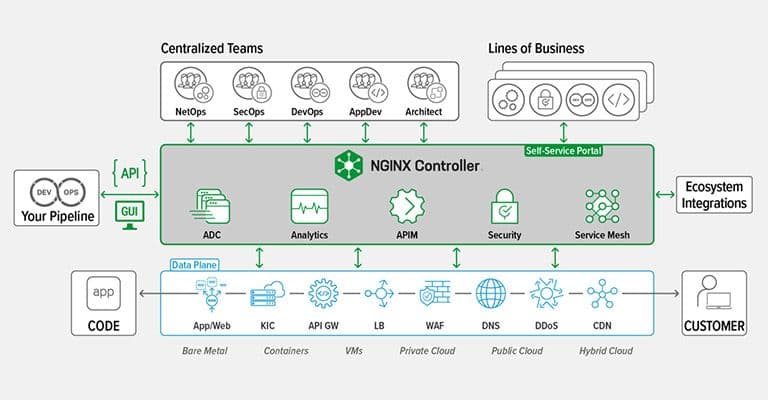The complexity and distribution of modern applications across cloud and private platforms creates challenges in visibility, analytics, and troubleshooting. By keeping data siloed or restricted to regional owners or functional teams, we expose applications to critical negative business impacts. Merging and finding relationship between distributed analytics, like application telemetry, events, and logs provides new insight into application health, creating multidimensional visibility tailored to your application's specific needs.
When a patient visits a doctor for a symptom with no obvious cause, identifying the source of the ailment usually involves two components. Collecting data and assessing that data. The patient might be given an MRI or an x-ray, which is then reviewed by doctors with different specialization. Different doctors may find different clues in the same data set—an orthopedic surgeon and an oncologist look for different abnormalities in the same MRI. Likewise, different types of doctors might use different sources of diagnostic information. The oncologist may request blood tests that aren’t helpful for the orthopedic surgeon, but which still give important information needed to keep a patient healthy. The way doctors work together to assess the health of a complicated patient is analogous to how application health must be managed by different teams within an organization. There are many advantages to understanding the best ways to abstract new and unique data when multiple sources of information are viewed together as a complete system. Multidimensional visibility models make it easier to maintain the health of applications by combining distributed data to provide increased visibility into a customer application experience.
Multidimensional visibility is a new way to conceptualize data segmentation and visualization. The goal of multidimensional visibility is to eliminate data siloes and make information accessible within an organization, allowing greater insight into the function of an application as a whole by making it easier to see how different systems interact and influence each other.
“The goal of multidimensional visibility is to eliminate data siloes and make information accessible within an organization.”
The first step is defining a data dimension. Choose the level of granularity best suited to the way the data will be used, and the individuals who will be using it—for example, you might provide more detailed security data for security professionals than for UX teams. Once multiple data dimensions have been defined, they can be combined in a single report or visualization that details the individual dimensions and provides a representation of the relationship between those dimensions—hence the term multidimensional visibility. With enough data dimensions, you can create an end-to-end, holistic view of your application.
Much like pain in a medical patient, a security event might be your first indication that something in your system needs attention. Using data obtained from a Security Information and Event Management system (SIEM) we can view application or infrastructure events, such as web application firewall (WAF) events, DDoS metrics, or external scanning alerts. Normally, this would be the purview of the SecOps teams. Using a multidimensional visibility approach, these events would be combined with other data sources, and reviewed by multiple teams, cross referencing the security dimensions with other available data and looking for connections between data sets. Because we can more easily see the relationships between systems, we can prevent serious problems by identifying small issues before they impact other systems and resolve new problems faster by identifying and isolating their causes, no matter where those causes are in the application as a whole.
By combining multiple data sources, documenting the relationships between those dimensions, and democratizing that data so it is available to a wider audience, you can provide new insights within organizations that were previously siloed.

This visualiation shows how identifying relationships between dimensions can provide insights that aren't apparent from unidemensional data. The complexity of multidimensional models can be scaled to suite the needs of your organization.
In order to make it easier for application, infrastructure, and security teams to successfully use multidimensional models without getting lost in the data, it is important to mitigate the following challenges:
Market research shows that failure to address these issues can contribute to an increased incidence of security incidents, application performance failures, and complete outages, all of which can result in loss of revenue and customer trust.
“Security gaps in misconfigurations were exploited in 66% of attacks (usually via exploitation of web application firewalls or misconfigured resources).”
Digital transformation initiatives put a spotlight on the importance of customer experience as a measure of application health. A multidimensional visibility approach makes it possible to see how a cloud traffic congestion issue may be related to a complaint about a slow checkout time experience. To most effectively use this approach, you need to choose useful data dimensions, identify the relationships between those dimensions, provide teams throughout your organization with access to multiple data dimensions, and ensure that those teams have tools that help them visualize and understand the connections between the data dimensions.
Multidimensional visibility models satisfy a need for holistic application health and provide a flexible way to model applications. By making it easier to see the interoperability between all the components of your enterprise application portfolio, these techniques put the best patient diagnostics into the hands of your application’s best physicians—your application owners and maintainers.

Learn how the cross-industry shift to app-centric tech changes the playing field for DevOps.

Learn about the four principles of visibility and how you can use them to improve business outcomes.

Controller 3.0, the industry’s first app-centric approach to managing and delivering apps and APIs.

Automate security and performance policies into your code pipeline so you can focus on innovation.